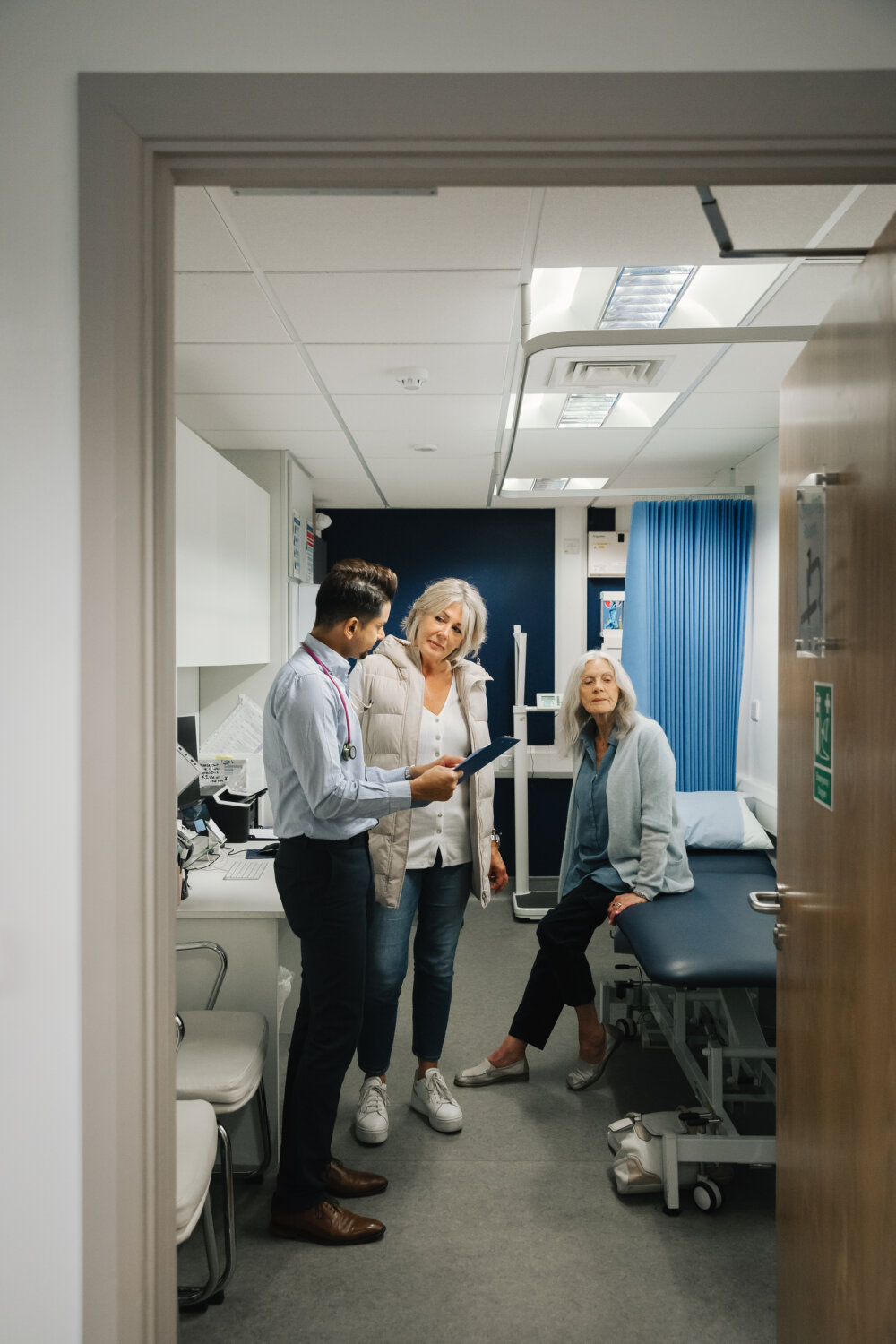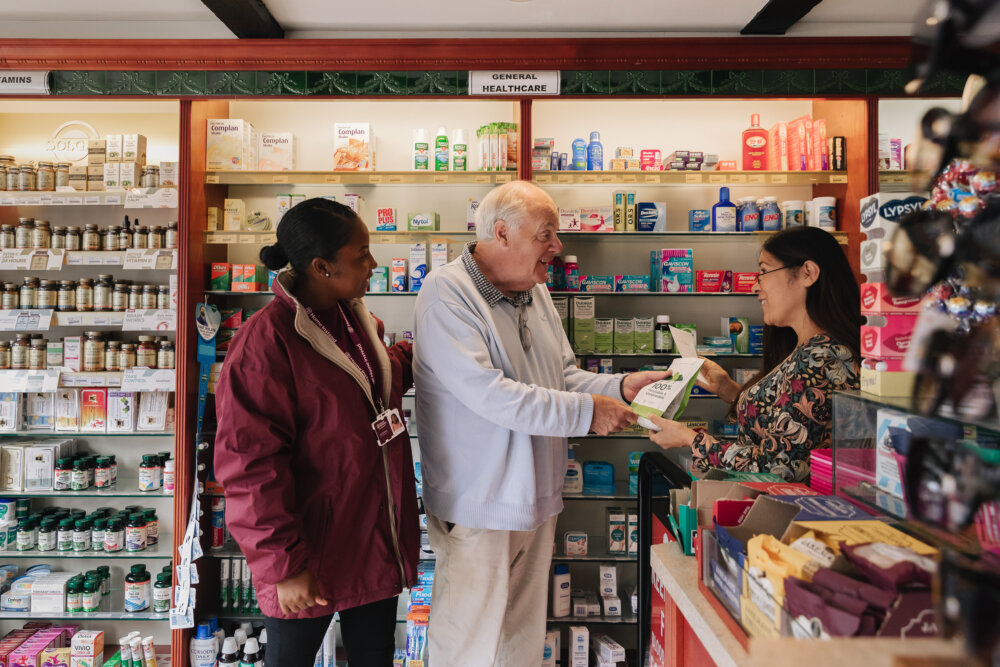A guide to common medical abbreviations on prescriptions

Guidance on medical abbreviations
As we get older, the likelihood of requiring more medications increases, whether to treat a specific ailment or to keep certain conditions at bay. If you have quite a few prescriptions and want to ensure you know exactly what you’re taking and when to take it, it can help to understand some of the common medical abbreviations used on prescriptions. Knowing these can make medication management easier, and can also help you decipher any medical reports and other documents you may need for your health. Here, we are demystifying the many abbreviations you might find on the pill bottles in your medicine cabinet so you can have more autonomy over your body and health. It may help to save this guide for later so you can refer to it whenever you need it. At Home Instead, our aim is to help people age positively and in place by bringing expert care to their home. For nearly 20 years, we have been providing the highest standard of care, and creating industry-leading training programmes for our Care Professionals that are accredited by nursing and medical professionals. Today, we are the world’s largest global home care network, supporting over 100,000 older adults with personalised, tailored care at home. Whatever questions you have about our services and the roles we currently have available, we can help.
Why are abbreviations used?
Often prescriptions are printed on small pieces of paper, and added to tiny labels on medicine bottles, packets or dosette boxes. With little room to write on, abbreviations are used to convey multiple pieces of important information within the confines of the label. Research finds that verbal instructions given for prescriptions are forgotten 40-80% of the time, so having written instructions is vital to make sure patients know how to safely take medications. Disclaimer: Keep in mind that while the below information can act as general guidance on common medical abbreviations, sometimes abbreviations can have multiple meanings, and are used primarily for internal communication between medical staff. For this reason, you should always speak to your pharmacist or GP first and take medications according to the instructions given by your prescribing doctor. Do not rely solely on label abbreviations.

Medication timings
Taking medication at the correct times throughout the day and week is important to ensure there is always enough of each medicine in your system for you to continue benefiting from it. For example, if you do not take pain medications regularly as directed, you may start to experience pain when the effects of the painkillers wear off. Similarly, if you take medications too frequently this can be dangerous for your health. If you are concerned about remembering to take medication, you may find our guide on How To Use A Dosette Box useful. You can use the below list of common abbreviations to determine how often you should take specific medication, but always check this with your prescribing medical practitioner or dispensing pharmacist.
- q1h – Every hour
- qh – Every hour
- q2h – Every 2 hours
- q4h – Every 4 hours
- q6h – Every 6 hours
- q8h – Every 8 hours
- qod – Every other day
- q1d – Every da
- qd – Every day
- OD – Once a day
- BDS – 2 times a day
- bid – 2 times a day
- bd – 2 times a day
- tds – 3 times a day
- tid – 3 times a day
- qds – 4 times a day
- qid – 4 times a day
- PRN – As needed
- ud – As directed
- qs – A sufficient quantity
- a.m. – Take in the morning
- p.m. – Take in the afternoon or evening
- Nocte – At night
Taking medications
Knowing exactly how to take certain medications is important, as some should be taken in a specific manner. For example, certain medications can irritate the stomach if taken without food, so these should be taken along with a meal. You can use the below list of common abbreviations to determine how to take certain types of medication, but always check this with your prescribing medical practitioner or dispensing pharmacist. Further information can be found in the Patient Information Leaflet supplied with your medicine.
- a.c. – Before meals
- gtt – Drop(s)
- i – 1 tablet
- ii – 2 tablets
- iii – 3 tablets
- IM – Injection into a muscle
- IV – Intravenous (injection into a vein)
- IVI – Intravenous infusion
- IVP – Intravenous pyelogram (X-ray of your urinary tract)
- M/R – Modified release
- NBM – Nil by mouth
- NPO – Not by oral administration
- NSAID – Non-steroidal anti-inflammatory drug
- p.c. – After food
- PO – Orally/by mouth
- PR – Rectally
- S/R – Sustained release
- SC – Subcutaneous (injection under the skin)
- stat. – Immediately, with no delay, now
Medical staff
When reading things like your Care Plan and other documents, it can help to understand some of the common abbreviations relating to medical staff who may be involved in your care. You can use the below list of common abbreviations to see which medical professional is being referred to, however check this with your doctor if in doubt.
- AMHP – Approved Medical Health Professional
- CMHN – Community Mental Health Nurse
- CPN – Community Psychiatric Nurse
- FY1 FY2 – cFoundation Doctor
- HCA – Healthcare Assistant
- HCSW – Healthcare Support Worker
- OT – Occupational Therapist
- Physio – Physiotherapist
- RN – Registered Nurse
- RNLD – Learning Disability Nurse
- SLT – Speech and Language Therapist
- SpR – Specialist Registrar
Others
On medical documents you may come across other abbreviations which could be helpful to know. Although there are many more abbreviations used throughout the medical profession, here are a few that could come in handy. As above, if in doubt always check the meaning of these with your prescribing medical practitioner.
- Dx – Diagnosis
- h/o -bHistory of
- Rx – Prescription Treatment
- BMI – Body mass index
- BP – Blood pressure
- CVP – Central venous pressure
- DVT – Deep vein thrombosis
- FBC – Full blood count (a type of blood test)
- Hb – Haemoglobin (a substance in red blood cells that moves oxygen around your body)
- HRT – Hormone replacement therapy
- UTI – Urinary tract infection
- DNACPR – Do not attempt cardiopulmonary resuscitation
- DNAR – Do not attempt resuscitation
- DNR – Do not resuscitate
What do I do if I come across an abbreviation I do not recognise?
Remember, abbreviations used on medical documents and prescriptions are meant solely for medical staff, so don’t worry if you cannot understand something on the label. There should also be clear, plain-English instructions written on your prescriptions that detail how many pills to take and how often. If you have any questions, you can contact the prescribing pharmacy or your GP for the correct information.
Also, if you require prescription information in a different language, some pharmacies offer bilingual medication information on dispensing labels to help you fully understand what you are being prescribed – ask your local pharmacy if they offer this. You may also find more health information in other languages on the NHS website.
We’re an award-winning home care provider and part of a worldwide organisation devoted to providing the highest-quality relationship-led care for older people in their own homes. Arranging care for yourself or your loved one shouldn’t be stressful, so whatever questions you would like answered, feel free to reach out to the Home Instead team to discuss your needs.


Michelle Tennant, Clinical Governance Lead